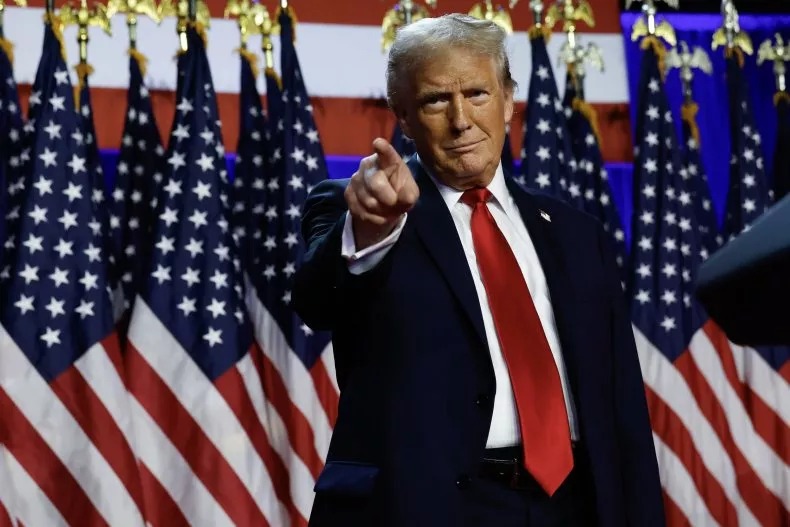By Burnett Munthali
In a stunning turn of events, Donald Trump has once again defied expectations by breaking through the formidable “blue wall” of traditionally Democratic strongholds in the United States, securing enough electoral votes to reclaim the presidency. His remarkable comeback reflects a combination of strategic targeting, effective campaigning, and shifting voter sentiments in key battleground states.
The “blue wall,” which includes states like Michigan, Pennsylvania, and Wisconsin, has long been considered a Democratic stronghold, with these states historically leaning left in national elections. Trump’s 2016 victory was seen as a fluke by many, as he managed to break through the wall, shifting the balance of power. However, after his polarizing presidency, many analysts believed that the blue wall was indestructible. Yet, in 2024, Trump has once again triumphed in these crucial states, marking a significant resurgence and solidifying his support base in regions where Democrats once had an iron grip.
Targeted Appeals to Working-Class Voters
A key aspect of Trump’s success has been his targeted appeal to working-class voters, particularly in the industrial Midwest. His campaign focused on economic nationalism, promising to revive manufacturing jobs and bring industrial strength back to America. This message resonated strongly with voters in Michigan, Pennsylvania, and Wisconsin—states that had seen decades of economic decline and a loss of manufacturing jobs due to globalization. Trump’s populist rhetoric, including his mantra of “putting America first,” offered a compelling alternative to the status quo, attracting voters who felt left behind by both parties.
Additionally, Trump’s economic policies, such as his opposition to rapid transitions away from fossil fuels, aligned well with voters in Pennsylvania’s coal and natural gas sectors. His team strategically highlighted the benefits of his approach, contrasting it with what they framed as the Democrats’ neglect of working-class concerns.
Focus on Cultural Issues
Trump’s 2024 campaign also skillfully tapped into cultural debates that have shaped American society, especially among conservative and rural voters. Issues like education, immigration, and national identity became central to his rhetoric. Trump positioned himself as the defender of traditional American values, contrasting these with what he portrayed as the Democrats’ progressive, elite-driven agenda. This narrative, combined with his tough stance on immigration, helped Trump maintain a strong base of support among voters who felt alienated by the Democrats’ focus on identity politics and social justice issues.
By presenting the Democrats as “out of touch” with mainstream America, Trump solidified his position in key battleground states, where cultural and economic anxieties often overlap. His message resonated with voters who viewed him as someone who understood their values and concerns, even if his style was often abrasive.
Changes in Voter Demographics and Turnout
The 2024 election saw significant shifts in voter demographics and turnout patterns that benefited Trump. While young voters and urban areas continued to lean Democratic, their turnout fell short of expectations, leading to a reduction in their impact on the election results. In contrast, Trump saw a surge in voter participation from suburban and rural areas, which bolstered his standing in key swing states.
Moreover, Trump’s campaign worked to expand its base by engaging minority communities, particularly Hispanic and African American voters. While these groups have traditionally leaned Democratic, Trump’s message on economic empowerment and law-and-order policies resonated with a segment of these populations, resulting in increased support compared to previous elections.
Campaign Infrastructure and Ground Game
Trump’s campaign invested heavily in building a robust infrastructure in the battleground states, focusing on local outreach, canvassing, and rallies. This grassroots effort proved particularly effective in Wisconsin, Michigan, and Pennsylvania, where the campaign re-established a strong presence in areas that were critical to his 2016 victory. By engaging with voters on the ground and amplifying local concerns, Trump’s team ensured that his message reached a broad cross-section of the electorate, from industrial workers to suburban families.
A Message that Resonated Amid Economic Concerns
Economic pressures, such as inflation and rising energy costs, were central issues in the 2024 election, and Trump’s campaign capitalized on these concerns. His message of a “return to prosperity” resonated with many voters who were dissatisfied with the Democratic administration’s handling of economic issues. By positioning himself as a champion of the working class, Trump appealed to those who felt the brunt of rising living costs and a shaky recovery from the pandemic.
Trump’s critics argued that his policies exacerbated inequality, but his campaign focused on portraying the Democratic Party as out of touch with the everyday struggles of working Americans. The promise of a stronger economy, coupled with a nostalgic appeal to pre-pandemic conditions, convinced enough voters in key swing states to swing in his favor.
Conclusion: A Historic Comeback
Donald Trump’s ability to break through the blue wall in 2024 underscores his capacity to adapt his messaging to the evolving political landscape. His success in reclaiming states like Michigan, Pennsylvania, and Wisconsin—once considered solid Democratic territory—marks a seismic shift in American politics. His victory suggests that the “blue wall” is no longer a guaranteed fortress for the Democrats and that voters remain highly responsive to targeted, culturally resonant campaigns.
As Trump prepares for another term in office, the Democratic Party faces critical questions about how it will address the economic and cultural concerns of working-class voters. The rise of Trump once again has highlighted the deep polarization within American society and the need for both parties to reassess how they engage with the nation’s diverse and often divided electorate.
Trump’s comeback in 2024 is not just a victory for him, but a wake-up call for the entire political establishment, signaling that the path to victory lies in addressing the anxieties and aspirations of those who feel disconnected from the current political system.




